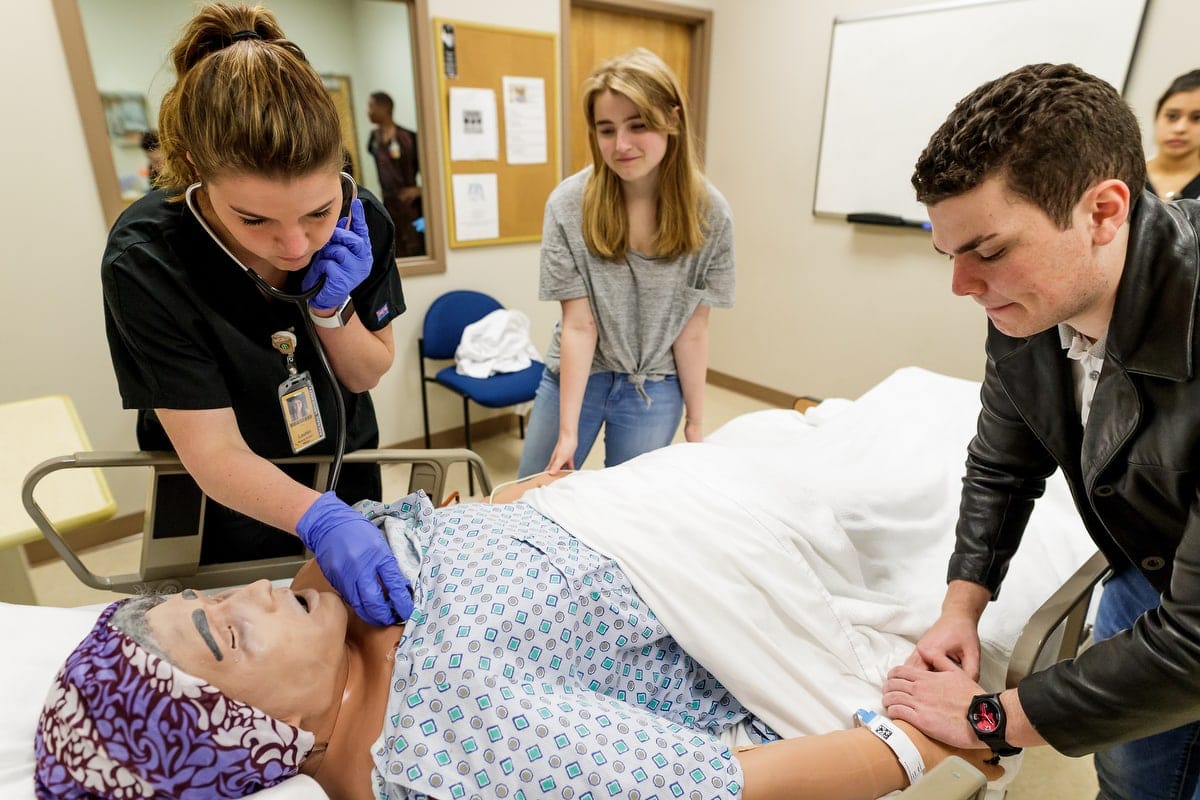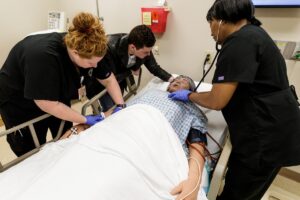
An interdepartmental project each semester brings together Brenau University students from three very different disciplines to practice handling one of the hardest things in life: death.
The Death and Dying Simulation, which ran Tuesday and Wednesday, April 10-11, involved Brenau nursing students, psychology students and theater students who work together to allow second-year nursing students practice handling the family members of dying patients. The theater students play the role of the family members during the simulation, and psychology students work with the nurses afterward to identify any struggles they faced in the practice.
“The purpose is for them to deal with it here before they have to face it in the real world,” said Jane Buffington, assistant professor of nursing. “I never know what kind of family members the theater students are going to play – loving, angry, upset – and that’s the point. You don’t know how people are going to react in real life.”

The Mary Inez Grindle School of Nursing at Brenau has a state-of-the-art nursing simulation laboratory, modeled after genuine hospital rooms and waiting rooms. The sim lab also boasts highly technical, medical simulation manikins, which can speak, blink and cry, as well as bleed, sweat and urinate. From a computer in the next room, Buffington can control the manikin’s vitals, include breathing and heart rate.
In the first simulation Tuesday, University of North Georgia students Maggie Todd and Matt Lunsford, who are members of the partnership with Brenau theater students known as the Gainesville Theatre Alliance, played a young woman and her estranged husband waiting at the deathbed of the woman’s grandmother. The estranged husband proved to be a disturbance in the hospital room, something the future nurses had to handle as they cared for their patient and her family member.
Buffington said this is the fifth year the departments have teamed up on the project.
“The very first time I participated in this, my friend and I played the scenario as mother and daughter watching a grandmother pass away,” Todd said. “We later did a scene as sisters, and one had been written out of the will. In that scene I ended up screaming at her at the top of my lungs, and the nursing students had to figure out how to handle that.”
Brenau nursing student Jessica Ray said she found working with the family members harder than the dying patient.
“But I now feel better about how to handle different things,” she said, “and how to be assertive with a family member who is making it difficult for my patient.”
In another scenario, Lunsford and Todd played equally devastated spouses, and Brenau nursing student Leidi Rodriguez turned off the vital signs monitor out of sensitivity to the family – a move her instructors say can be crucial in these situations.
Rodriguez described the simulations as “pretty intense.” Buffington said the purpose of the scenes, no matter how serious or how seemingly ridiculous, is to illustrate all the possible human scenarios that truly do occur in the hospital rooms of dying patients.
“I can always tell the nursing students aren’t sure what to expect and that at first they don’t believe it or fully buy into it,” Todd said. “But when they do, they always surprise me with how well they handle or diffuse the situation. I am always really impressed by them.”

